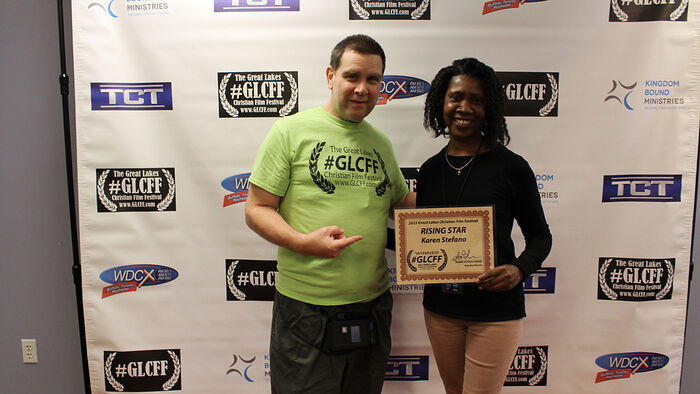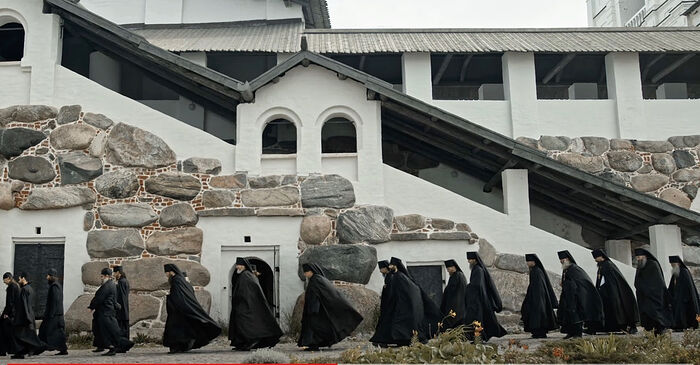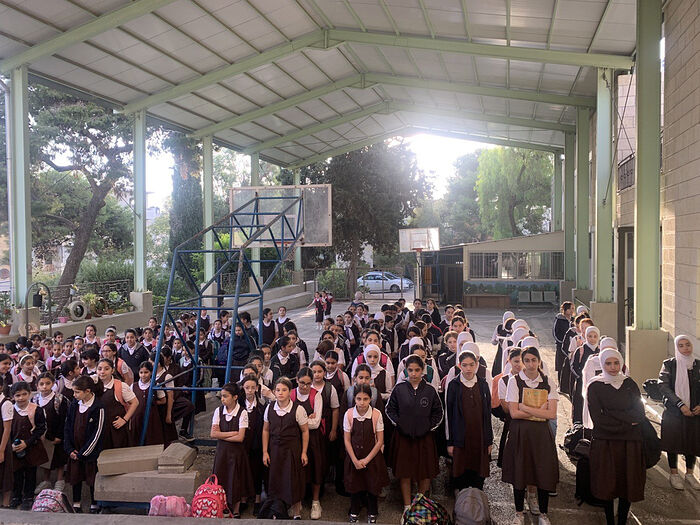
The 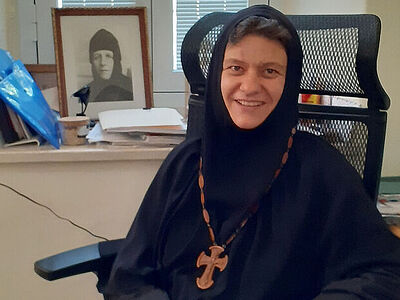 We Won’t Accept Blind ObedienceNun Maria (Valle), the sister superior of the Bethany monastic community (Palestinian Autonomy) and the Director of the Bethany School and Orphanage for Girls, talks about the school, joy and challenges of her work as its director, the relations with the local Moslem community and the Palestinian government’s education offices, as well as about the ultimate priorities of teaching the Moslem girls in the Orthodox school.
We Won’t Accept Blind ObedienceNun Maria (Valle), the sister superior of the Bethany monastic community (Palestinian Autonomy) and the Director of the Bethany School and Orphanage for Girls, talks about the school, joy and challenges of her work as its director, the relations with the local Moslem community and the Palestinian government’s education offices, as well as about the ultimate priorities of teaching the Moslem girls in the Orthodox school.
“>Russian Orthodox school for Arab girls in Bethany now seems to be a small island of hope and relative calm in the midst of the war storming the Middle East. The girls, many of whom have relatives in the Gaza Strip, are still studying; and their teachers try to help them not only to survive this escalation of the ongoing conflict, but continue just to be children. How this is possible in under these dire conditions is what I asked Mother Maria (Wall), the principal and administrator of Bethany School, which is under the auspices of ROCORS’s St. Mary Magdalene Convent.
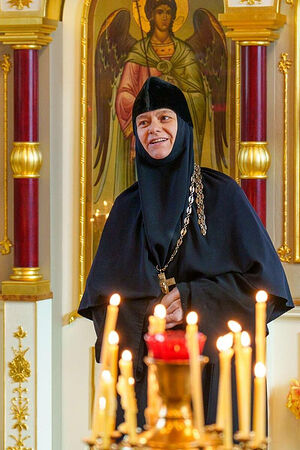 Mother Maria (Wall) —Matushka, first of all, can you describe what is happening in and around the school?
Mother Maria (Wall) —Matushka, first of all, can you describe what is happening in and around the school?
—Spiritually, our sinfulness has found release and embodiment in what is going on around. It is a war, a spiritual war between good and evil.
—Are all of your students and teachers safe for now?
—You know, safety is a term that has greatly changed in meaning for me since I have been here in the Holy Land. Even before these events, we were in situations, or there were times when you had to figure out quite quickly that your only safety is God.
I’ve gotten good educational experience—I do not remember now even how long ago, but it was a conflict escalation between Hezbollah in Lebanon and Israel. There were bombings and rockets flying on that part of the country, up north. It was happening during the summertime, and we had one of our Christian boarding girls, about 12 or 13 years old, living there not far away from the border. She was in shelters most of the time.
This girl called me and described the situation, and asked if it was possible for her to come to the monastery. Of course, I wanted to go immediately to pick her up myself, but it was too dangerous. I was looking for other options and finally a Muslim taxi driver offered himself. He was about 60 years old and I knew that he had 8 to 10 children, a big family. I asked him: “Are you not afraid to take the risk? Do you understand it isn’t safe for you to go there either?”
I recall his reply in all the difficult situations. He said: “Listen, sister. If my name is on a rocket, it will find me even if I hide in the shelter. And if my name is not on it, even if I am on its way, it will make its way around me.”
This is what you learn in such situations. Because situations in the Holy Land change quite rapidly. You do not expect anything, you just go to your regular events, to the monastery, to the post office, or to the supermarket, and then suddenly, out of nowhere, fire breaks out. And you pray, and God calms the storm in the sea so that you can walk on the water.
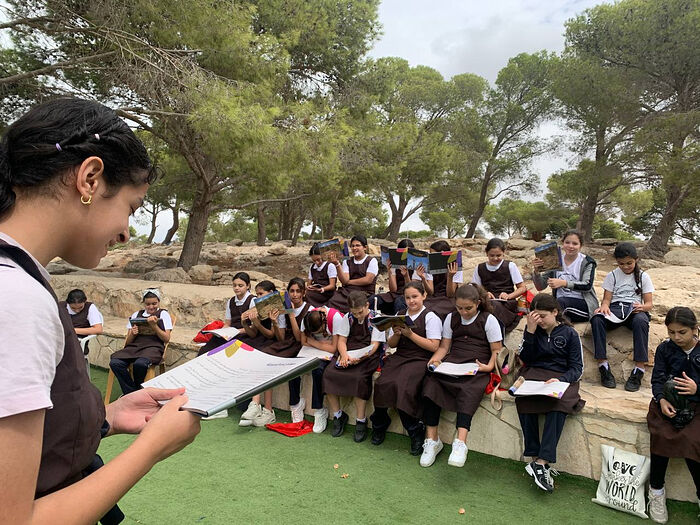
—When we set up an interview, you said that the school is working, and that is already good. Does that mean that the situation is so serious?
—Yes, the situation is serious. It is not the first, and I am afraid it is not the last time. Yes, a working school, at least for our children, is a sign that there is normalcy in their daily life. Something that is normal and stable for them. It is a chance to continue their childhood, it is a chance to continuing their education.
The schools around us close for different reasons. Sometimes, it is because of safety. But right now, for instance, government schools do not have enough money to pay salaries, so most of them are online for that reason. And this is a reality as well.
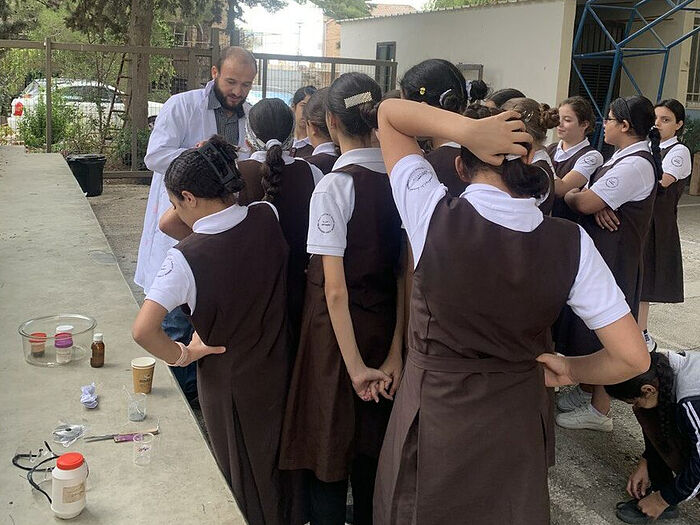
—But your school continues working despite all of these things?
—We continue working, and we are face-to-face. As an administration, you have even more responsibilities. You have to watch the situation and judge when you are risking too much, because you have to make sure that parents are still able to pick up their children or the children are still able to reach their homes. You need to judge how serious or how dangerous it gets around you.
Right now, the situation around us in Bethany is more or less calm. However, our teachers come either from Jerusalem, which is Israel, or Bethlehem, which is West Bank, Palestine. They are the most vulnerable group, exposed to the most danger on their road to the workplace. Checkpoints are not safe, and the situation is unpredictable. You face difficulties where you would not want them to happen.
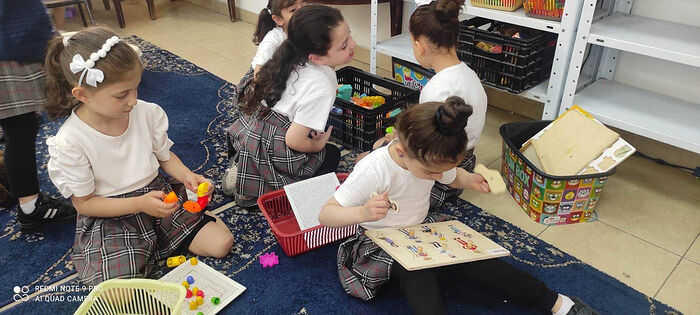
—Your students are girls from Palestine, and they are very young. What do they feel in relation to the current situation? What are they worried about now?
—First of all, we do not only have children from Palestine. What do they feel? What can children feel in the war zone? There many emotions in society altogether. Their parents are definitely watching too much news, and children are exposed to too much violence. We are trying to communicate this issue to the parents. We tell them, “Protect your children from this because it has an impact on them.” And this is what we are discussing with our teachers as well. This is one of the first things that I say: if because of this situation your time watching the news on mobile devices increases but your prayer time does not, then you are definitely moving in the wrong direction.
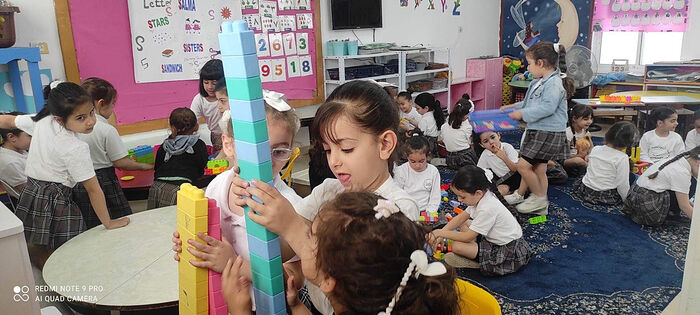
—All these emotions have a negative impacts on children’s mental and spiritual health. How is it possible to mitigate these destructive effects, which can remain with them for their whole life?
—These children already live in this situation. Right now, it is as if knocking on their doors, but it is not the first escalation. I was not here in the time of the Intifadas, but I was told that it was horrible as well. It is actually sad to say that it is just another escalation that will have an impact on these children. It is our responsibility, as adults, to protect them as much as possible and keep them in safe surroundings, and give them an opportunity to talk about what they feel, what they think, and what they experience in their homes. That is what we try to make sure to convey to their parents—to be protective of children. And an open school is a sign of normalcy—it is stability that is absolutely necessary for these children. There is still school, there is still homework, and there are still exams and responsibilities. You have to take care of your education, especially as there is still a tomorrow after today, and—hopefully—sunrise after all the darkness.
And of course, what is now being talked about much more is: When you feel vulnerable, so unprotected and exposed and surrounded by evil, help can only come from God. You must pray! You must establish your relationship with God, you must take a look at how spiritual your life is. We are all part of it, we all were not serious about our spiritual lives. That is why evil was able take over so easily.
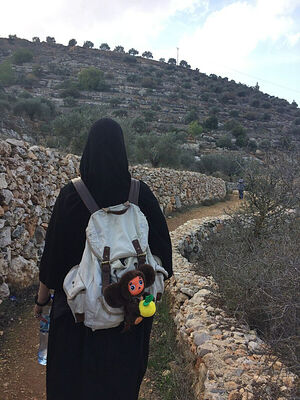 —There are no pilgrims in Israel now, so there are no donations. How can all of us, who will read this story support your school? What help do you need, perhaps not only material but spiritual?
—There are no pilgrims in Israel now, so there are no donations. How can all of us, who will read this story support your school? What help do you need, perhaps not only material but spiritual?
—Of course, first of all is a prayer—any prayers. If there are a lot of small prayers, they turn into a river. If many people pray all together, God has a much better chance to interfere, to get into this situation, and to turn it around. So, first of all, I would say we need spiritual support. All of us have to review our spiritual lives, all of us have to see what is going on in our relationship with God. Each of us has to see how much sin is easily accepted in our lives, and how much we are just adding to all this darkness with our personal sins. And all of us have to repent.
Concerning material support—yes, of course, we need it. The situation now, is little-by-little getting tough. On the other hand, with all years since I have been in Bethany, I still really wouldn’t be able to tell you how we actually have survived financially month after month. Miracles have happened. We’ve had a couple of larger donations that would come in in the most difficult times, but most people would send the smallest amounts, 10 or 15 dollars. However, because they are joining together, this has helped us survive literally month by month. This is how it works.

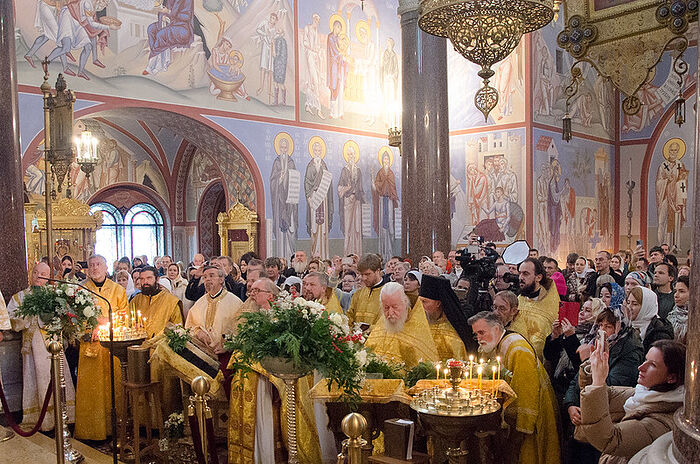
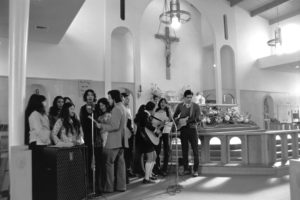
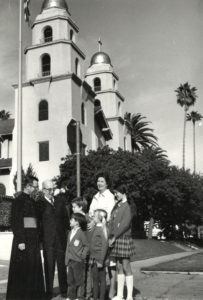
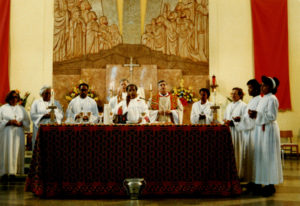
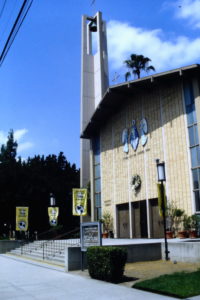

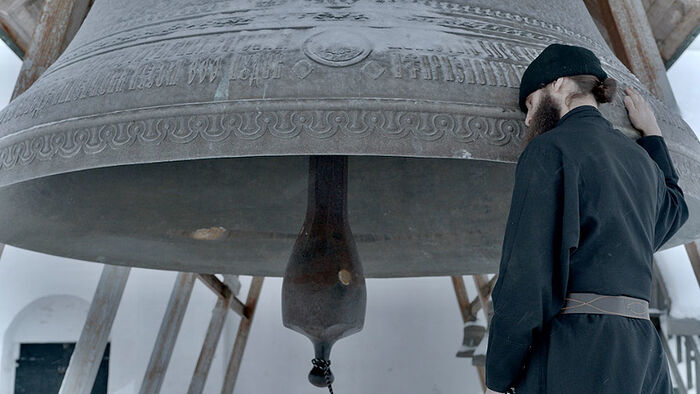
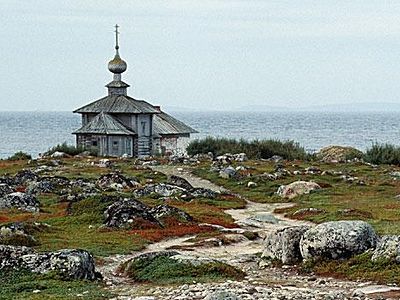 Mystical SolovkiWe have chosen for this photogallery on the feast of the Synaxis of Solovki Saints a selection from works by photographers and artists featured on the Solovki Monastery’s website.
Mystical SolovkiWe have chosen for this photogallery on the feast of the Synaxis of Solovki Saints a selection from works by photographers and artists featured on the Solovki Monastery’s website.